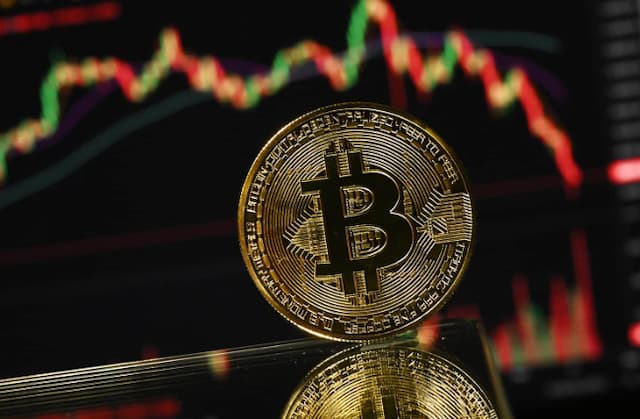The Record Rise in the Price of Gold, a Reflection of the Pessimism Linked to the Economic Crisis

At the beginning of August, the ounce of gold passed the symbolic mark of 2,000 dollars. Investors and individuals rely on this safe haven in times of crisis, even if there is a risk of falling prices.
- In August, the price of an ounce of gold broke the $ 2,000 mark, breaking a previous record in 2011.
- In a context of negative interest rates and uncertainties linked to the economic crisis, investors and even individuals are betting on gold. Its value is increasing in the context of prudence and pessimism, especially since the current health situation is slowing down the recovery of the economy.
- However, betting on a rise in gold can turn out to be a miscalculation.
Is it “the gold” … to do good business? At the beginning of August, the price of an ounce of our dear precious metal exceeded the symbolic mark of 2,000 dollars, appreciating by more than 30% since the beginning of the year. A record since 2011. In the context of the pandemic, specialized shops logically see an influx of individuals needing cash or those who, conversely, want to buy it, betting on future capital gain.
“The price of gold is beating records, and it is not over,” predicts economist Philippe Herlin on or.fr, a site specializing in trading this precious metal . The forecasts are racing: 2,100 dollars by the end of September, according to UBS, ditto for JP Morgan, 2,300 according to Goldman Sachs or even 3,000 for Bank of America at the end of 2021, as reported by Business Insider. Note that the price of silver is also soaring.
A cocktail of factors
Many factors explain the soaring value of gold and the interest shown in it by investors (banks, insurance companies, investment funds, etc.). The trend was already on the rise before the arrival of the health crisis linked to the coronavirus. Through the central banks’ policy of lowering interest rates , public debts are issued at negative rates. A safe investment for investors, but then without any return, which increases the attraction for gold.
That’s not all. The trade war that broke out in 2018 between China and the United States also pushed prices up. Another element: doubts about gold production in the coming years, which could reach its limits for lack of new deposits. To this is added the economic crisis directly caused by the pandemic.
As the price of the precious metal is denominated in the US currency, a decline in the greenback also makes gold cheaper for buyers with other currencies. “Gold rose due to mistrust of the dollar. Those who had assets denominated in this currency sold them to buy gold, ”observes Philippe Crevel, director of the Cercle de l’épargne.
Investor caution
This interest in gold more generally reflects a mistrust of economic policies. “When investors rush into gold, it is because there is a loss of confidence in the action taken by central banks,” explains economist Stéphanie Villers. If we inject money each time, we print change. Who reimburses? The only tangible value; it is this precious material. ”
In such a context, banks, insurance companies and investment funds are playing cautiously. Demand for gold-backed investment funds (ETFs) have exploded . “There is a kind of misunderstanding between economic reality and stock prices, which are starting to rise again. If we are cautious, we say to ourselves that they have increased sufficiently and that we must look for other growth poles, which are not in the real economy, ”she adds.
“End of the world” logic
The price of gold is therefore also fueled by a certain pessimism. “If tomorrow, there is very bad news, a major economic problem, the price will rise,” continues Philippe Crevel. Small savers can be tempted by such an investment because they fear value for their money. “There is an element of irrationality. The state is going into debt, there are anxiety-provoking messages. People are afraid of bank failures, of insurance companies, or of the government using it in their current accounts. There is an end-of-the-world logic, ”adds this savings and retirement specialist.
Logically, while the economic situation is still so uncertain due to Covid-19 and the shadow of a second wave, it is still possible to do business. “As long as there is no visibility on the recovery, there will be no collapse in the price of gold,” said Stéphanie Villers. However, she warns against such logic, which sends a “very bad signal of loss of confidence in the financial system”.
Dropping out of classes is still possible
However, for Philippe Crevel, other arguments invite to relativize the interest of this gold rush. “You should never follow the pack, but precede it!” Today, buying gold is already buying it very expensive, ”he emphasizes, recalling that its usual value has roughly been around 1,200 dollars an ounce in recent years. In the long run, stocks like real estate pay more than gold, he argues.
The risk of a fall in prices cannot be ruled out either, he reminds the attention of those hoping for rapid capital gains. “Investors lowered their dollar positions and, in the meantime, bought gold. But it is possible that they will sell it very quickly, ”continues Philippe Crevel. The price of gold is also likely to decline if the economic situation improves. “In 2013, the Greek crisis was resolved and there was more gold on the market,” he recalls. In the event of a recovery, investors will also return to their traditional investments, which are more profitable than an investment in gold which does not pay dividends.
Another possible scenario that could lead to a decline: a big storm in the financial markets. In a note published in May 2012, the Directorate General of the Treasury recalled: “In times of extreme stress, stock market returns and the return on gold are positively correlated, no doubt because of the need for investors to liquidate part of their positions in gold to cover losses on other asset classes ”, we read . This is what happened at the beginning of March: the price of gold suddenly dropped, before rising again.
Enjoyed this? Get the week’s top France stories
One email every Sunday. Unsubscribe anytime.


